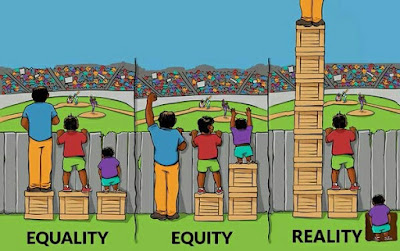Why We Need to Pay Attention to Our Priorities
Communities have plenty of needs and most are urgent. Knowing the difference between what is truly necessary and what is expendable is easier said than done. That is why our values often shape our priorities. And in education, our foremost duty is to provide opportunities for learning to all students. Equity and social justice must guide our priorities. With the under-representation of Blacks, Hispanics and low-income children in advanced academic programs, it may seem logical to have in place in each school accountability and direction. It may seem straightforward to see that only with a full-time personnel can a school truly address equity in advanced academics. It is clearly a need of great and urgent significance. In a larger scheme, however, this need can easily fade. Commenting on a recent budget hearing in our county, candidate for board chairman, Alicia Pierhoples writes, "17,000 low-income children are eligible for pre-K in FCPS but the Board has only added 36 new pre-K slots in the FY20 budget." With limited resources, we can easily miss our true goal if we are not paying attention to our priorities and not holding steadfast to our values. As a result, we may actually do more harm than good.
I would like to share in this blog the specific recommendation I made to address the problem of inequity in the advanced academic program of Fairfax County Public Schools:
Member Name: Angel C. de Dios
Recommendation: (Broad Statement): Provide a curriculum to all children starting at kindergarten that enriches and prepares for challenging academic work. Mimic what children of privilege receive through their parents in the early years of education.
Reason/Brief Elaboration: Research has shown that “disproportionality in gifted identification process persists across all racial groups regardless of method used to identify the students as gifted”. (Hodges, J., Tay, J., Maeda, Y., & Gentry, M. (2018). A Meta-Analysis of Gifted and Talented Identification Practices. Gifted Child Quarterly, 62(2), 147-174).
Specific examples of what that might look like:
In summary, my suggestion is to "front-load". And surprisingly, when the priority chosen is truly faithful to the value, in this case, equity, it actually aligns with the need to provide quality early childhood education to low-income families.
 |
| Above copied from Michael Wilkerson |
I would like to share in this blog the specific recommendation I made to address the problem of inequity in the advanced academic program of Fairfax County Public Schools:
Member Name: Angel C. de Dios
Recommendation: (Broad Statement): Provide a curriculum to all children starting at kindergarten that enriches and prepares for challenging academic work. Mimic what children of privilege receive through their parents in the early years of education.
Reason/Brief Elaboration: Research has shown that “disproportionality in gifted identification process persists across all racial groups regardless of method used to identify the students as gifted”. (Hodges, J., Tay, J., Maeda, Y., & Gentry, M. (2018). A Meta-Analysis of Gifted and Talented Identification Practices. Gifted Child Quarterly, 62(2), 147-174).
Specific examples of what that might look like:
- Provide field trips to zoos, aquariums, parks and museums to all K-2 students
- “Move literacy instruction out of the classroom and into informal learning environments”, as exemplified in the N.O.A.H. project (Chicago) (http://tinyurl.com/y4ymng78)
- Implement a Head Start/Follow Through program in K-3. The follow through program includes “health and social service components, home visits from paraprofessionals that encouraged parents’ participation in their child’s education, and participation in school advisory councils”. (Abelson, W. B., Zigler, E., & DeBlasi, C. L. (1974). Effects of a four-year Follow Through program on economically disadvantaged children. Journal of Educational Psychology, 66, 756-771).
- Reduce class sizes in K-2 to 13-17 per classroom in schools that have a large fraction of reduced/free lunch students. (Finn, J. P. & Achilles, C. M.. (1999). Tennessee’s class size study: Findings, implications and misconceptions. Educational Evaluation and Policy Analysis, 20, 95-113).
In summary, my suggestion is to "front-load". And surprisingly, when the priority chosen is truly faithful to the value, in this case, equity, it actually aligns with the need to provide quality early childhood education to low-income families.
Comments
Post a Comment